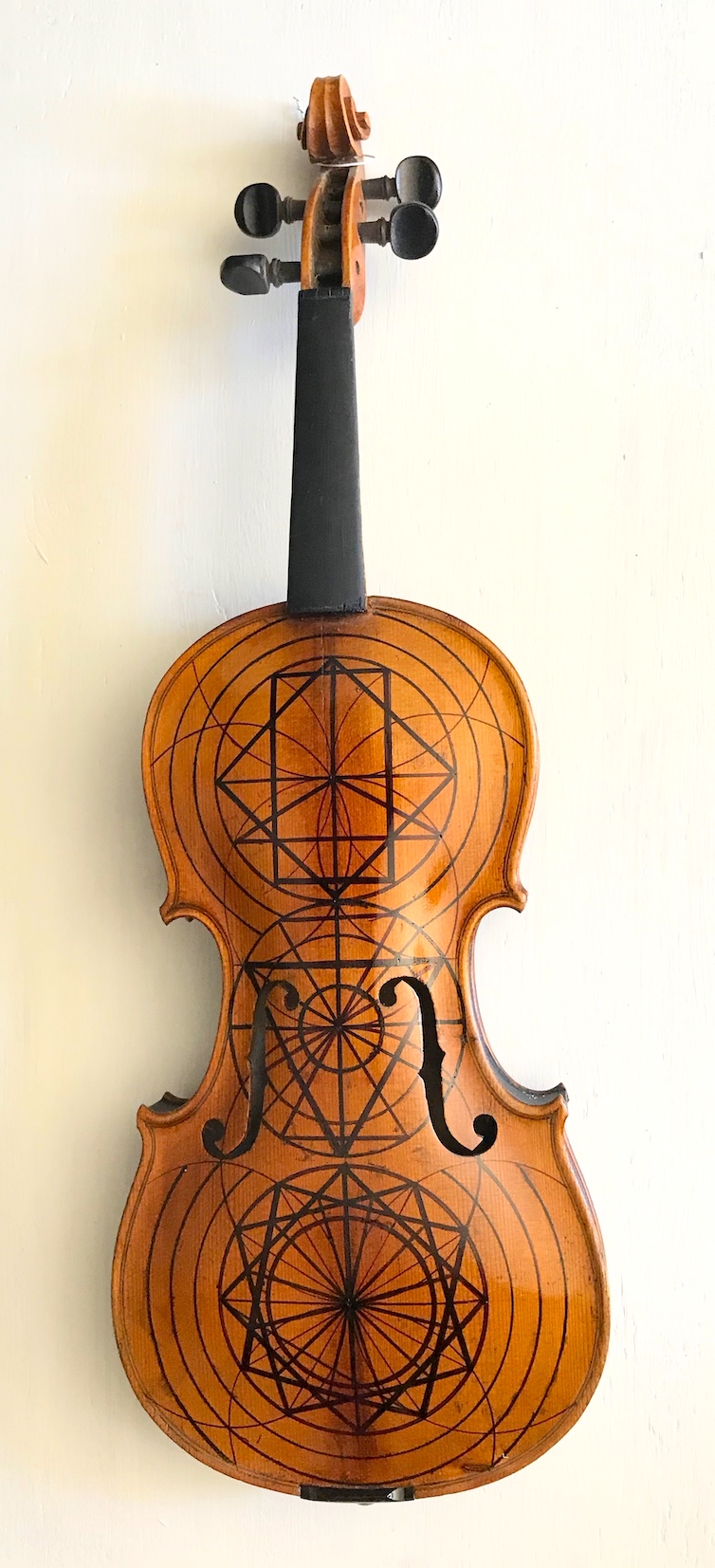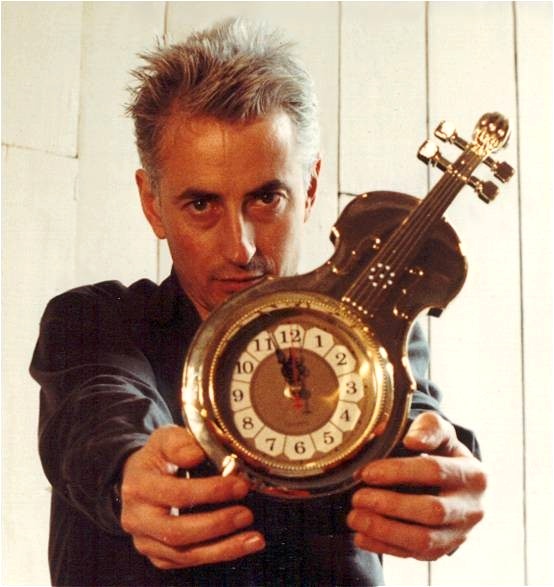The sound of 10 million dollars
The shit hit the fan when this was broadcast on ABC radio in 2007!
Over the last few weeks a number of celestial violin stories have lined up in the string universe. Here are two of them.
Firstly, a team of underemployed academics at Salford University have set up a website where the casual browser can help list the worst sounds to afflict our species. The only musical instrument to appear in the list is the violin. It comes in at number six, just above the sound of a fake fart and just below the sound of a squeaky seesaw. The winning 'worst sound' was the sound of someone vomiting, which may tell us more about the statistical bias of the research that was undertaken in Lagerland (the UK). The academic project's title is 'Bad Vibes'. Yes, indeed.
The fact that the violin (poorly played) is the only musical instrument to appear in the list may indicate a number of cultural issues not assessed by the University of Salford. The first issue, of course, is the fact that all the sounds used are representations of sounds - there isn't a real firsthand experiential sonic event amongst them. All the sounds have been compressed; to put it in non-technical terms, this means that any unique features of the sounds are rendered featureless - as varied and exciting as the surface of a plastic credit card. Each reductive experience of the 'worse sound' also comes at the listener at about the same amplitude and with the same methodology - a mouse click. Secondly, there is no context for the sound. You don't have to be much of a movie buff to know that the music can make the image and vice versa. And you don't have to hear many concerts of live music to realise that the theatricity of live performance is critical in indicating the sonic story.
Another line of questioning might have given us more useful results - such as how many people have actually heard a real violin played live. I don't have any data, but I doubt if 97 % of the population of Australia could tell a viola from a violin. Continuing on that string, you could ask how many have heard a violin intimately (i.e. as a player with the instrument actually transmitting its resonance through the player's body). How many have heard any musical instrument in an anechoic chamber (a room sound-proofed to ensure as little reflective reverberation as possible - in other words, you hear just the instrument without any enhancement from the room)?
And how many punters have ever listened to the acoustic qualities of a violin played in a traffic-choked city street, outside in a real new age setting (the noisy one with tweeting birds and running brook, not forgetting the flies and wind), lost in a cathedral with a seven-second delay, competing for attention in an outback pub, as background music in a restaurant, or struggling for survival in a techno-fuelled dance club above 130 Decibels (still amazingly audible - I've tried it)? Context is the crux of the issue; context transforms the performance of all musical instruments.
The only significant information gathered by professor Trevor Cox's popularist nonsense is information already known for many years: that the lazy ears of western popular culture are being dumbed down by the continual use of equilisation set at the car hi-fi aesthetic where the boosted bass thumps you in the guts and the cymbals and consonants of the singer titillate what's left of the hairs in your inner ear. The sad truth is that all ears are terminal after the age of 18 as the higher frequencies of 16,000 Hz plus tail off into an ever-increasing deafness. No surprise that senior citizens have trouble with many sounds as their hearing sensibility is channelled into an ever-diminishing frequency range. That much of the 'bad vibes' report is true.
Someone once said that selling the latest piece of unnecessary technological junk to Australians was like 'shooting fish in a barrel'. The metaphor stands up well, too, when you consider the nonsense surrounding Richard Tognetti's (1) recent acquisition of a $10,000,000 Guarneri del Gesù violin, purchased for him by some anonymous but extremely rich and famous film star one presumes. The perfect sales pitch was handed to the gushing Australian Chamber Orchestra PR person who sounded more like she was selling mobile phones to teenagers or package holidays to grannies than entering any debate on the musical worth of headlining a programme of classical music as 'Revolution'. Unlike the Eroica Symphony, Beethoven's Violin Concerto wasn't revolutionary in its day and certainly represents the antithesis of anything radical in the 21st century.
Wild horses couldn't drag me to pay out at the 'Australian Flagship's' box office, so I heard the concert on ABC-fm. Hence, I could witness the adjectival overkill pouring forth from the radio in the interval. Something like 'Yes, it's standing room only as the capacity audience wants to hear what $10,000,000 sounds like'. As I said, like shooting fish in a barrel. 'All the other orchestras have their expensive Italian violins, why shouldn't the Australian Chamber Orchestra have its own.' she luxuriated all over the radio audience. Why? Because the world has heard great orchestras like the Leningrad Philharmonic, the Gewandhaus Leipzig, or the Czech Philharmonic, all playing with a great string sound and without one expensive 17th century Italian violin in sight. That's why.
I was talking to a fan of Tognetti's who travelled for over three hours to hear the ten million dollar wunder. She confessed a mixture of shock, guilt, and self-doubt that when the great maestro demonstrated his three violins onstage to the charged up and compliant audience, she couldn't tell any difference between them despite the price tag differential. She needed have worried.
As any honest violin dealer will tell you (and there are a few), the sound of a violin can be priced in a range from $50 (bad but playable), to $5,000 (good-sounding) to $50,000 (extremely good tone and projection) to $100,000 (over-priced). The rest is snotty-nosed hubris. As has been proven on a number of occasions, most notably by the BBC in 1974, a well-made, top modern violin can sound just as good if not better than the prized golden age models. In a recording studio, behind a screen, the violins of Isaac Stern, Charles Beare, and Pinchas Zukerman were played back to them. The instruments played were a Strad, a Guarneri del Gesù, a Vuillaume, and a Ronald Praill (a modern instrument less than a year old). None of the esteemed violin experts had a clue which violin was which. Furthermore, most of them couldn't even tell which was their own instrument. They were left mumbling platitudes about the personal relationship between fiddle and player - bloody obvious if you spend most years of your life playing the violin.
Fast forward to a new century of spurious violin evaluation, and who was the expert London dealer who dumped this multi-million dollar violin on the Australian fish in their barrel? Why, none other than Charles Beare, who on that BBC blindfold test had trouble telling the difference between a Strad, a Guarneri del Gesù, a Vuillaume, and a Ronald Praill.
In 2003, the Texas A & M University biochemist and violin maker Nagyvary set up a blind test duel between one of his recently finished instruments and a Strad. On the Prokofiev violin Sonata in D, 57 music experts picked the Strad, 129 were not sure, and 290 got it wrong (in the sense that they picked the modern instrument over the 'Leonardo da Vinci' Strad).
A blind test took place in Sweden two years ago in which three modern Swedish violins were compared to a Stradivari, a Gagliano, and a Guadagnini. The six instruments were played by two professionals and judged by members of the European string teachers association. A modern Westerlund violin got the top score; the Strad came last.
The same goes for cellos. At the American cello congress in 1990, 140 musicians judged 12 cello: six old (including the usual Strad and batch of Italian makes) and six new. As a group, the new instruments were judged better on tone and projection than the older instruments.
US violinmaker Carline Hutchins devoted her entire life to creating an octet of modern violin class instruments based on the viol family. The project drew on heavyweight scientists from across the States and beyond to arrive at the most efficient acoustic string instruments yet made. There are three complete sets of the Hutchins' Octet in existence, and they produce the most dazzling string ensemble sound that I've ever heard. Of course, none of this innovation will ever make it into Violinworld, home of the most reactionary and conservative forces in classical music.
If there is $10,000,000 going for Australian music, then spend it on the music, not antiques. Oh, you jealous guy, you are just saying that, if you had access to a $10,000,000 violin, you would keep it. (2) Wrong. I would have the instrument meet an accident and use the insurance money to fund thousands of concerts of new violin music throughout the next century. Australia doesn't need this cringing nonsense, particularly when it is blessed with such superb (and inexpensive) makers as the brilliant and prolific Harry Vatiliotis of Sydney.
Let's spell it out. The sound of a good violin depends as much on the player, the space, and the context as it does upon its construction. The performance by Tognetti of the Beethoven, complete with a swag full of 'revolutionary' screw ups, could best be described as ordinary.
The notion of a $10,000,000 violin sounds out the smiling but ugly face of capitalism, applauded by all the fish in the barrel - as they love to be had. The classical music industry, basically a bunch of dodgy antique dealers, aided and abetted by Hollywood, promotes its entire existence based on delusions and myths about Strads (the Red Violin), Mozart (Amadeus), and Tchaikovsky (The Music Lovers), ad nauseum.
When Stern and Zukermann were asked why they prefer Cremonese violins to modern instruments, they replied 'Security'. Yes - the sound of Wall Street shouts out numbers like $10,000,000, not a musical instrument.
1 Readers living outside of Australia very likely will never have heard of this character. However in the small pond of Australian classical music, he is considered... 'genius'.
2 As it happens I sometimes played on a Guarneri and a few other expensive Italian violins and cellos owned by rich kids when I worked at the Royal Academy of Music, London in the early 1970s. Yes, they were better than my cheap German violin - but not hundreds of thousands of dollars better.
Jon Rose on Ockham's Razor © ABC radio 2007













